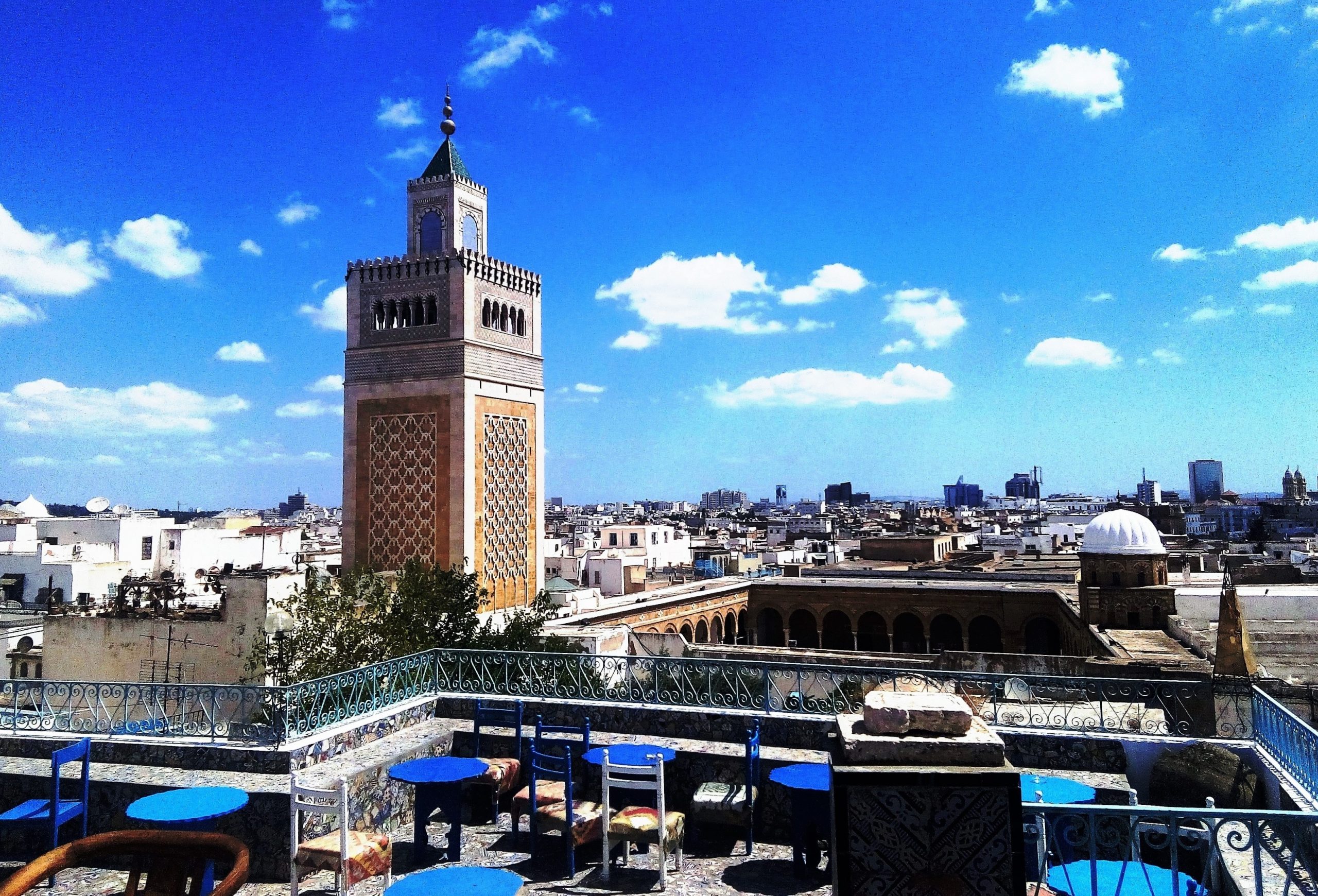
This ancient city, nestled in the heart of Tunisia's vibrant capital, takes you on a fascinating journey through time and culture, inviting you to discover its unique architectural, artistic, and culinary treasures!
Founded in the 7th century, the Medina of Tunis has a rich history that reflects the various influences that shaped the city over the centuries. Originally built as a fortified town by the Arab Umayyad conquerors, the Medina underwent significant transformations during the Almohad and Hafsid dynasties, who added palaces, mosques, and madrasas that showcase the region's architectural and artistic prowess.
As you wander through the narrow, winding streets of the Medina, you'll be captivated by the many architectural masterpieces that line your path. From majestic mosques like the Zitouna Mosque, with its impressive minaret, to the ornate tiles and intricate carvings of the Al-Hawa Pasha Palace, these majestic structures serve as stunning reminders of Tunisia's illustrious past.
A stroll through the Medina of Tunis also provides an opportunity to celebrate the region's rich artistic heritage. Numerous artisans, including ceramicists, weavers, and coppersmiths, maintain the tradition of passing down their skills through generations, creating beautiful, handcrafted pieces that are both functional and aesthetically pleasing. Be sure to explore the local markets, known as souks, where you can find a dazzling array of traditional crafts and textiles that represent the unique character of Tunisia.
When it comes to tantalizing your taste buds, the Medina of Tunis does not disappoint! The city offers a vast range of culinary delights that reflect its diverse history and cultural influences. Be sure to sample some of the local specialties, such as couscous, brik ( a delicious pastry filled with egg, tuna, and herbs), and harissa (a spicy chili paste) to truly experience the flavors of Tunisia.
The Medina of Tunis has long been a melting pot of cultures, welcoming visitors from across the globe, including scholars, traders, and artists. As a result, the city is home to a diverse community of people, who have each contributed to the region's vibrant cultural fabric. The Jewish community, in particular, has left a lasting imprint on the city, with the vibrant Tunisian-Jewish neighborhood, known as the Hara, showcasing a unique blend of architectural styles and traditions that make it a must-visit destination within the Medina.
As a UNESCO World Heritage site, the Medina of Tunis is committed to preserving its vast historical, architectural, and cultural heritage for generations to come. Ongoing restoration and conservation efforts work to maintain the city's character, while also fostering sustainable development that benefits the local community, ensuring that the Medina remains a vital and vibrant part of Tunisia's rich tapestry.
What is the best time to visit the Medina of Tunis?
The Medina of Tunis can be visited year-round, but spring (March to May) and autumn (September to November) offer the most pleasant temperatures for exploring the city on foot. During these periods, you can enjoy milder weather and smaller crowds, making for a more enjoyable experience.
How long does it take to explore the Medina of Tunis?
The length of your visit to the Medina will depend on your personal interests and the amount of time you have available. To fully appreciate the city's rich history, architecture, and culture, consider setting aside at least two to three days for your visit. This will allow you to explore the various sites and markets at a leisurely pace without feeling rushed.
Is the Medina of Tunis safe for tourists?
Yes, the Medina of Tunis is generally considered safe for tourists. As with any travel destination, however, it is essential to remain vigilant, particularly when it comes to your personal belongings and valuables. Be sure to familiarize yourself with the local laws, customs, and safety guidelines before your visit, and consider registering with your country's embassy or consulate to receive updated travel advisories or emergency assistance if needed.